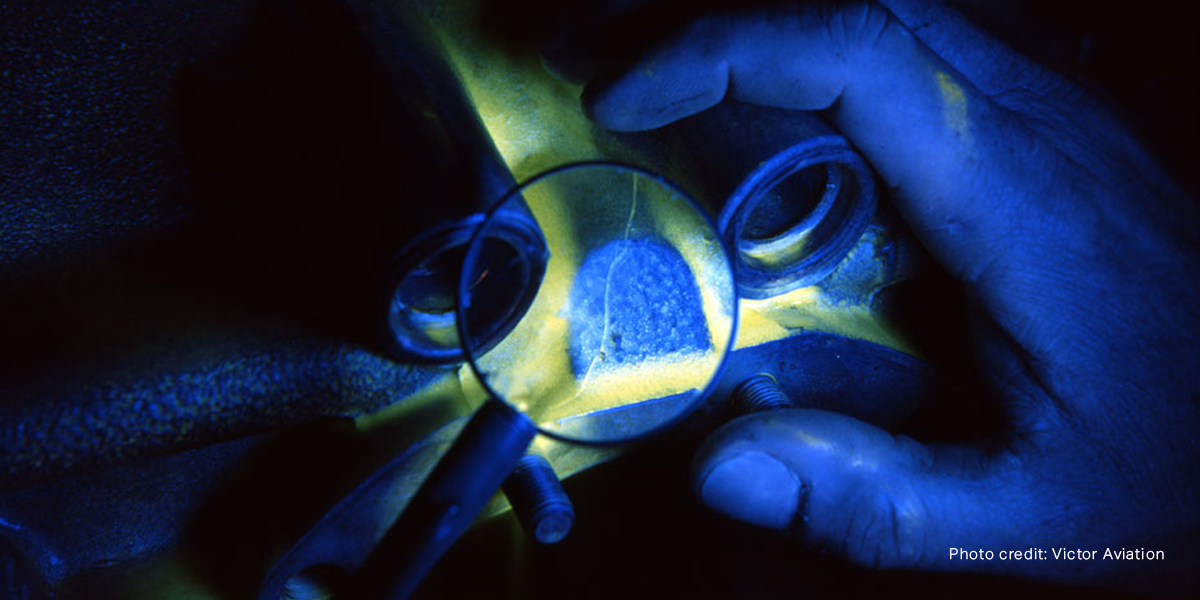In the intricate world of manufacturing and engineering, where precision and reliability are paramount, hidden flaws can be a critical concern. Imagine a microscopic crack lurking beneath the surface of a vital aircraft part or a minuscule defect compromising the strength of a critical machinery component. These imperfections might go unnoticed by the naked eye, but they can have far-reaching consequences. This is where Penetrant Inspection, a remarkable non-destructive testing (NDT) technique, steps into the spotlight.
Unveiling Penetrant Inspection: A Closer Look
Penetrant Inspection, also known as Liquid Penetrant Testing or Dye Penetrant Testing, is an NDT method that has been serving as a guardian of quality in various industries for decades. The technique revolves around the principle of capillary action, harnessing the power of fluid dynamics to detect surface-breaking defects with exceptional precision.
The Process Unveiled
1. Surface Preparation: The process begins with thorough cleanliness. The object under inspection is meticulously cleaned to remove contaminants that might obstruct the penetrant’s path.
2. Application of Penetrant: A specially formulated penetrant solution, often vividly colored or fluorescent, is applied to the clean surface. This low-viscosity liquid is akin to a detective, seeking out and infiltrating even the tiniest cracks and fissures through capillary action.
3. Dwell Time: Patience becomes the virtue as the penetrant is given time to work its magic. During this period, it explores every nook and cranny, seeping into any open defect it encounters.
4. Excess Penetrant Removal: After its exploration, the penetrant’s journey comes to a temporary halt. The excess liquid is carefully removed, leaving only the penetrant trapped within any surface defects.
5. Application of Developer: Enter the developer, a powdery substance applied to the surface. It acts as a revealer, coaxing the trapped penetrant out of defects and onto the surface.
6. Indication Inspection: The stage is set for revelations. As the trapped penetrant is drawn to the surface, it creates visible indications, much like hidden secrets coming to light. These indications are carefully examined by skilled inspectors.
7. Interpretation and Evaluation: This is where the art and science of inspection converge. Inspectors evaluate the indications, considering their size, shape, location, and other attributes. The assessment determines the nature and significance of the detected defects.
Beyond the Surface: Applications and Impact
Penetrant Inspection is not just a method; it’s a shield of assurance. Industries spanning from aerospace and automotive to manufacturing and more rely on this technique to maintain the integrity of their products and ensure the safety of end-users. By uncovering defects that might jeopardize the structural soundness of components, Penetrant Inspection contributes to enhanced quality control and risk mitigation.
A Tribute to the Unseen Heroes
Every time you step onto an aircraft, drive a car, or benefit from a well-functioning piece of machinery, remember the unsung heroes behind the scenes—NDT professionals wielding dyes and keen eyes to make our world safer and more dependable. Their dedication ensures that quality remains a steadfast companion in an ever-evolving technological landscape.
In conclusion, Penetrant Inspection stands as a testament to human innovation, bridging the gap between imperceptible flaws and the pursuit of excellence. Through its meticulous process and unwavering commitment to precision, it showcases the power of science in fortifying the foundations of modern engineering.
